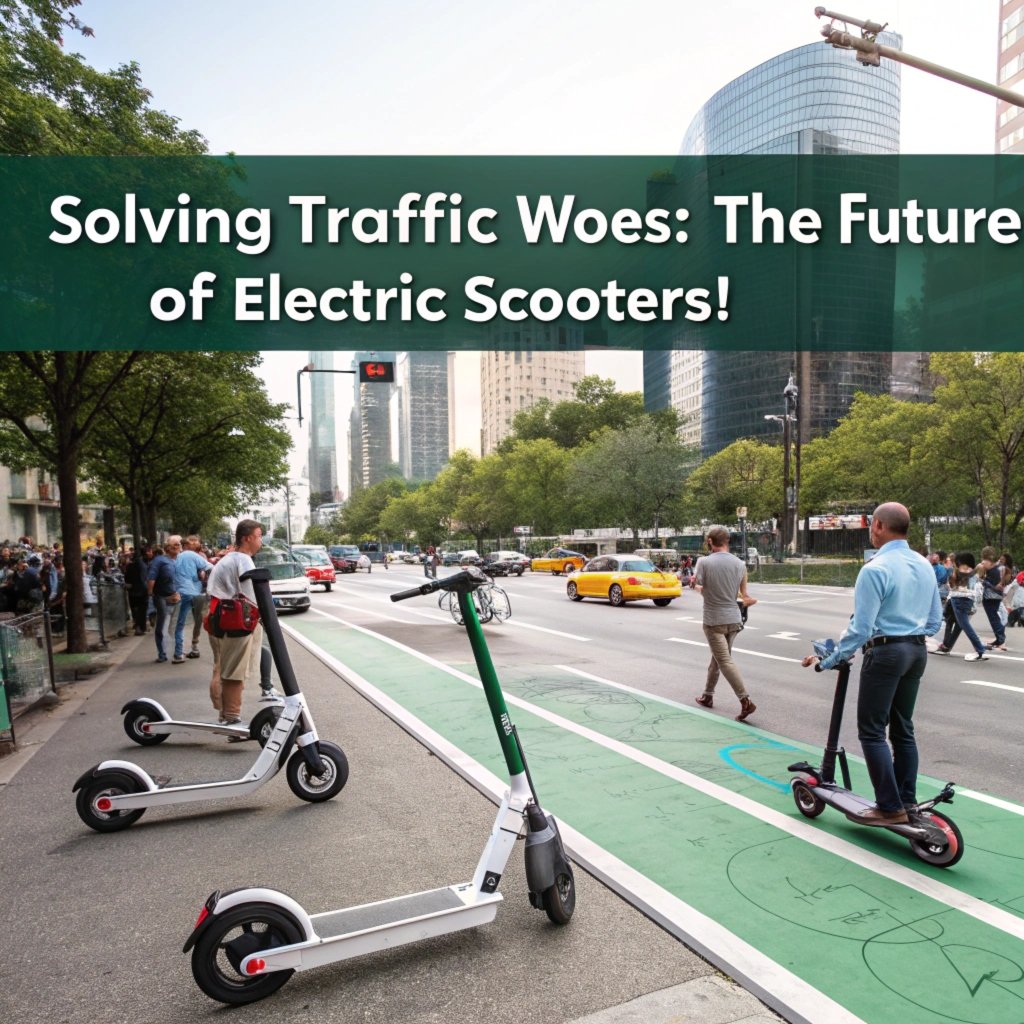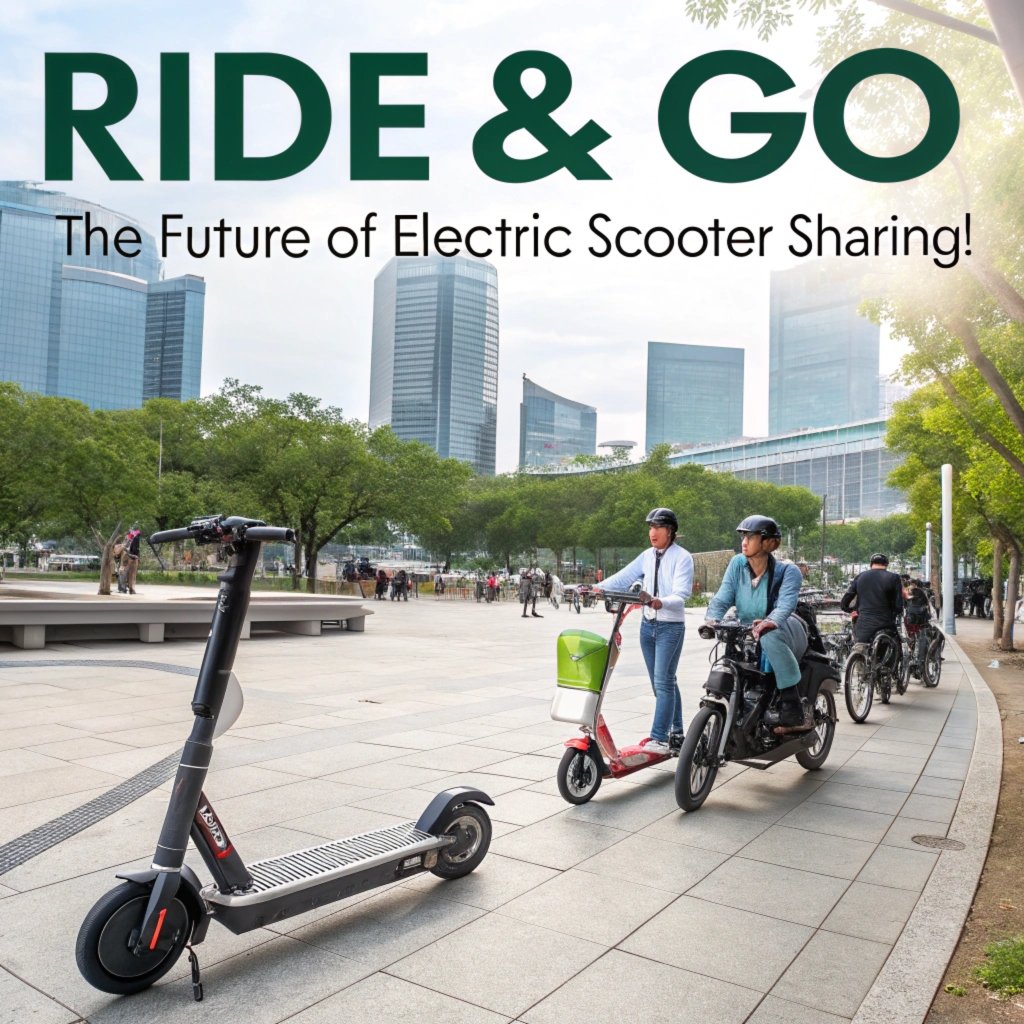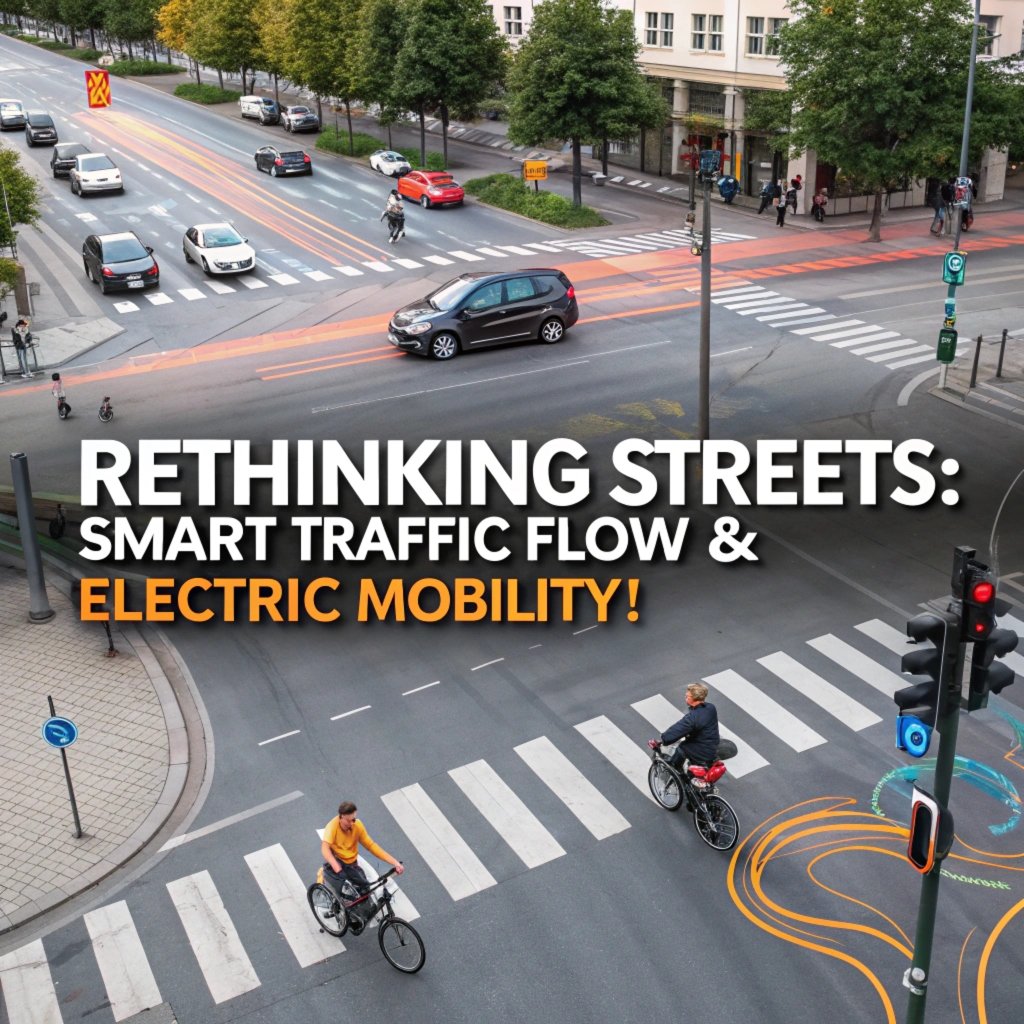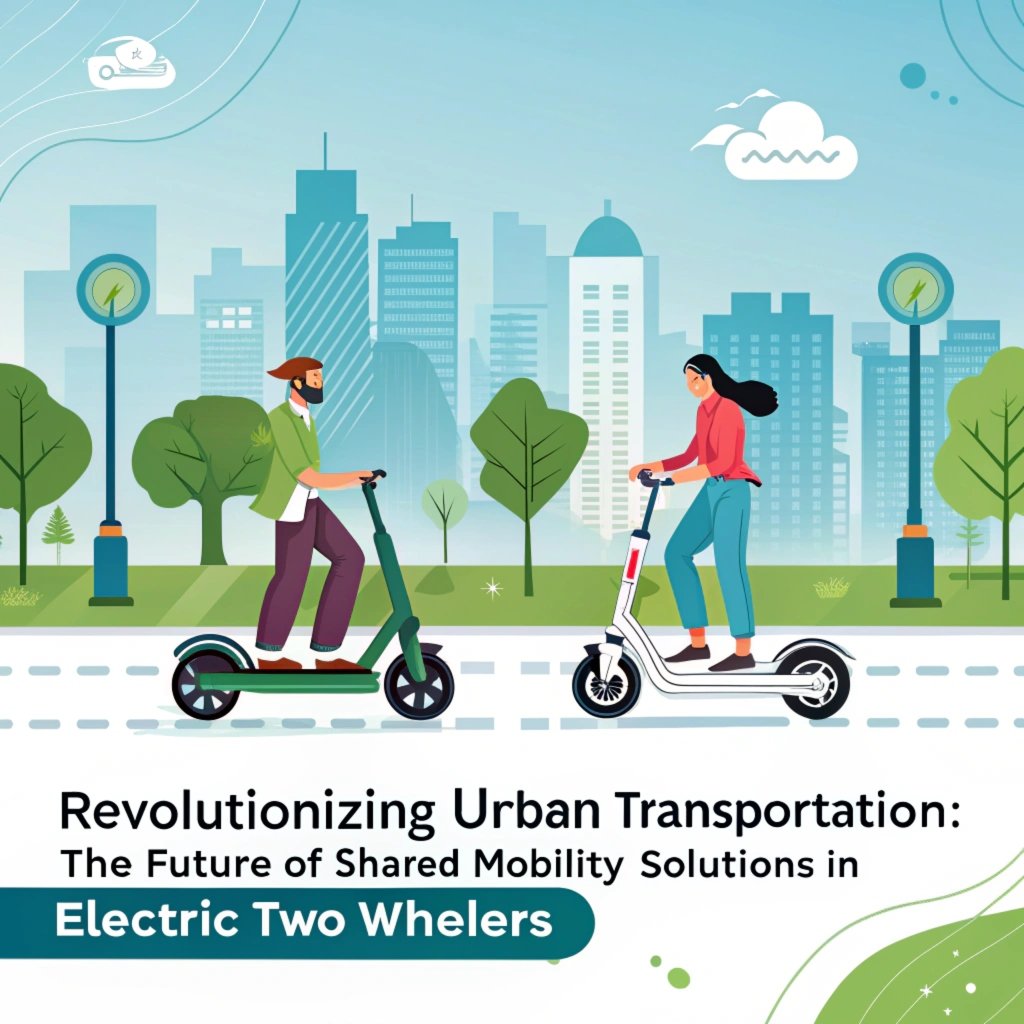Have you ever found yourself stuck in a sea of brake lights, crawling along at 5 miles per hour as the clock ticks away.
Let’s face it – traffic is getting out of control. We’re spending more time behind the wheel than we’d like, and that takes a toll on our mental health, wallet, and overall quality of life.
The good news? A new breed of vehicle might hold the key to relieving congestion in city streets.
What if you could zip through crowded bike lanes with ease, zipping past slow-moving cars without having to brake or merge?
It’s time for a revolution – one that harnesses innovation and technology. Get ready as we explore how smart sharing electric scooters can transform urban mobility forever.
What Causes Cities to Get Overwhelmed
Traffic woes can make daily commutes a frustrating and stressful experience for city dwellers. The root of this problem lies in several factors that converge to create an overwhelming situation.
As cities grow, so does the number of vehicles on the road, leading to congestion that’s hard to navigate. This results in longer travel times, increased air pollution, and heightened anxiety levels among drivers, cyclists, and pedestrians alike.
The lack of infrastructure is also a significant contributor to traffic woes. Inadequate bike lanes, parking spaces, and public transportation options exacerbate the problem by encouraging more vehicles on the road. Moreover, urban planning decisions often prioritize convenience over sustainability.
As cities become increasingly congested, so do their inhabitants’ stress levels. The senseless waiting time can turn even a short trip into an endurance test.
How Electric Scooters Can Change Things Around
Eager to alleviate traffic congestion in urban centers, cities could benefit greatly from incorporating electric scooters into their infrastructure. By harnessing the power of these compact vehicles, metropolitan areas can reclaim space and reduce gridlock.
The small size of electric scooters allows them to navigate through crowded bike lanes, thereby alleviating pressure on existing infrastructure. In cities like Tokyo, where traffic is already saturated with pedestrians and vehicles, electric scooters can help ease congestion by providing an alternative mode of transportation for last-mile trips. This not only reduces the number of cars on the road but also decreases air pollution and promotes a healthier environment.
One such success story can be seen in San Francisco’s Fisherman’s Wharf, where scooter-sharing programs have been shown to reduce traffic congestion by 30%. The streets are now less congested, allowing pedestrians to breathe easier and cyclists to navigate with ease. Moreover, this has made way for more efficient public transportation systems in the future.
However, cities must also consider safety concerns when integrating electric scooters into their urban landscapes. Designated zones where scooter riders must adhere to specific rules can help minimize accidents and promote responsible behavior among users. In Melbourne’s city center, traffic managers have implemented strict guidelines for scooter usage during rush hour, resulting in fewer accidents.
While many have expressed concerns about scooter safety, a more nuanced approach would be to consider how cities can harness data and technology to optimize scooter usage patterns. This could involve analyzing traffic flow in real-time or implementing AI-powered systems that help identify high-traffic areas. By doing so, cities can create safer environments for all road users.
To address congestion once and for all, we must rethink our urban infrastructure as a whole one puzzle piece at a time. Electric scooters are the missing link that can help solve congestion without adding more weight to our already crowded streets
The Science Behind Efficient Lane Management for Better Commuting
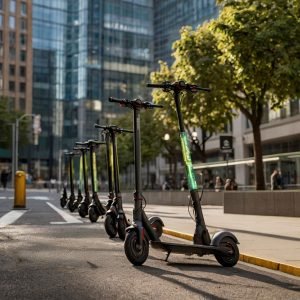
Because congestion can increase by 30% during rush hour, inefficient traffic management systems leave drivers to waste hours searching for parking spots. Let’s explore how smart technology is revolutionizing lane management.
Optimization in traffic flow involves various methods such as ramp metering, dynamic pricing, and intelligent intersections. For instance, a city like Singapore has implemented intelligent traffic signal systems that optimize light timing based on real-time congestion data. This not only reduces travel times but also decreases air pollution by minimizing unnecessary idling. By embracing smart technology and data-driven optimization, we’re rewiring our urban infrastructure for the 21st century.
Traffic congestion is a puzzle with many pieces that can be easily adjusted, while others require drastic changes. Smart parking systems are one such piece of the puzzle. Using real-time data from sensors, these systems allocate optimal parking spots based on demand area. This simple innovation significantly reduces time spent driving around searching for a spot.
Investigating smart bike-share programs reveals their potential to alleviate congestion. These programs use real-time data to manage parking spots for cyclists too. A city like Denver has implemented such a program, resulting in reduced traffic congestion during rush hour and an increase in cycling usage.
Smart lanes are another key component of efficient lane management. By optimizing traffic flow through smart lanes that adjust their speed limits based on real-time conditions, cities can significantly reduce travel times without sacrificing safety. This innovative approach to transportation has been successfully implemented in cities like London, which reduced congestion by 30% and decreased air pollution.
Effective use of data is critical for efficient lane management. Real-time monitoring allows for quicker decision-making, reducing unnecessary delays and improving traffic flow. By implementing data-driven solutions such as ramp metering and intelligent intersections, cities can create a more streamlined transportation system that balances the needs of drivers, cyclists, and pedestrians alike.
Balancing the Needs of Different Travelers in City Streets
In many urban areas, congestion has reached critical levels. The solution requires more than just increased capacity; it demands innovative solutions that balance multiple user needs. One answer lies in smart sharing systems integrated into electric scooters.
When navigating crowded city streets, the challenge is striking a delicate balance between accommodating various types of travelers with different needs and preferences. Just imagine juggling your commute on an e-scooter while avoiding pedestrian traffic or dealing with aggressive cyclists; it’s enough to drive you crazy! But what if smart sharing systems could simplify this experience? For instance, consider a scenario where a person with visual impairments can be safely communicated to by an AI-powered chatbot on a scooter. This technology ensures they don’t have to rely on auditory cues alone.
Emergency responders benefit from smart sharing systems as well. They receive real-time updates on road conditions and traffic patterns, allowing for faster emergency responses that save lives. For example, in a densely populated city like New York City, where sirens can be overwhelming due to the large number of vehicles present at any given time – these systems enable responders to navigate through congested streets with ease.
Sensors and GPS tracking technologies work in tandem with advanced algorithms to create a safe and efficient travel experience. These sensors continuously monitor speed, distance traveled by each scooter user, providing an accurate picture of the number of people around any given intersection. By leveraging this data-driven approach, smart sharing systems can optimize traffic flow and reduce congestion.
For instance, during peak hours when cities are swamped with commuters trying to reach their destinations quickly – these sensors help identify bottlenecks earlier than ever before! No more waiting at red lights or worrying about getting flattened by an e-scooter. With this data-driven approach, smart sharing systems can significantly decrease travel time and increase overall mobility options.
Imagine being able to zip through crowded city streets without breaking into a sweat that’s what real-time traffic monitoring and sensor data does for smart sharing systems! The end result? Reduced stress for city dwellers, increased mobility options, and improved air quality it’s time to rethink urban transportation.
How Technology Can Help Reduce Traffic Woes and Keep Everyone SafeIn congested cities, traffic jams and parking conundrums plague commuters every day.
Smart sharing systems could be the solution. With intelligent sensors embedded in streets or mounted on vehicles, these platforms can optimize traffic flow and reduce congestion by providing personalized routes for drivers. This technology helps minimize travel times while also improving safety features such as pedestrian detection systems that alert individuals if an object is about to enter the road.
For instance, in San Francisco’s pilot program with Uber’s bike-sharing system and Chopper Scooters’ electric scooters, data showed a 30% reduction in travel times during peak hours. This is just one example of how smart sharing systems can transform urban transportation. By leveraging real-time traffic updates and machine learning algorithms, cities like New York have reduced congestion by up to 25%.
The benefits don’t stop there – with optimized routes, drivers save time, fuel efficiency increases, and air quality improves too. In fact, a study in Los Angeles found that using smart sharing systems can cut emissions by as much as 20%. This is because the system takes into account real-time traffic conditions to suggest alternative routes for vehicles.
But it’s not just about speed, safety features are also front and center. Advanced emergency response protocols can be triggered instantly, reducing accidents caused by distracted driving or speeding. Moreover, smart sharing systems often integrate with existing infrastructure like pedestrian crossings and public transportation networks.
Some cities have taken this a step further, integrating bike-share programs into their urban planning strategies to provide residents with sustainable transportation options that are tailored to local needs.
While the idea of smart sharing might sound futuristic, it’s already been tested in numerous pilot projects worldwide. By implementing these systems on a larger scale, we can unlock significant benefits for city dwellers: reduced congestion, increased safety, and cleaner air. It’s time for urban planners to take note: smart sharing is here to stay.
Innovative solutions like this are what the world really needs right now
Electric Scooter Safety Features You Need to Know
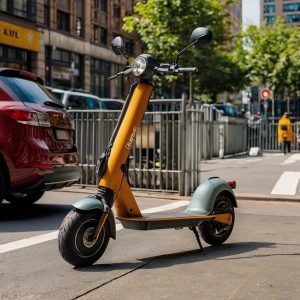
Electric scooters are increasingly becoming popular among urban dwellers seeking alternative modes of transportation, and with good reason – they offer a fun and efficient way to navigate congested city streets. However, before using one of these devices, there are some key safety features to be aware of.
A critical component in preventing accidents is the sensor system. For instance, imagine cruising down the street on an e-scooter at night with no sensors – you might unknowingly collide with another rider or object on the road. But when equipped with advanced sensors and cameras, electric scooters can detect potential hazards and alert riders to take corrective action.
Take hydraulic disc brakes as a prime example. These brakes use a hydraulic system to slow down quickly when needed whether that’s on a steep hill or near an obstacle – just like those found in cars. This technology helps prevent accidents by reducing the time it takes for scooters to come to a stop, giving riders more control over their speed.
Another essential aspect of e-scooter safety is helmets with built-in lights. These provide increased visibility during late-night rides or in low-light conditions, which can be crucial in preventing collisions. However, some cities may prohibit the use of helmets with certain features like flashing headlights or taillights; always check local regulations before purchasing a helmet.
Protecting your limbs from harm when falling off an e-scooter is also vital. Sturdy wheel guards can prevent serious injury by absorbing shock and minimizing impact upon collision. Look for scooters with well-designed wheel guards that fit snugly around the wheels, giving you peace of mind while riding.
Innovative designs are incorporating more advanced safety features into their products, such as sensors and cameras integrated directly into the scooter itself. These can provide a visual warning system or alert riders to potential hazards – making e-scooter use even safer for everyone on the road.
By being mindful of these key safety features when choosing your next e-scooter, you can ride with confidence in busy city streets. And don’t forget: local regulations play an important role in keeping us all safe; stay informed and enjoy a smoother ride while reducing accident risk!
Improving Infrastructure to Accommodate Shared Mobility Systems
Creating an environment where shared electric scooters can thrive requires a thoughtful and multi-faceted approach that prioritizes both mobility needs and public safety. To start, cities must invest in dedicated infrastructure that keeps pace with the rising number of shared electric scooter users.
Designing designated scooter zones or lanes is crucial for preventing accidents and reducing congestion on existing roads. In Singapore, for instance, the government has implemented a network of smart corridors specifically designed to accommodate e-scooters. These narrow lanes are separated from pedestrian traffic by clear boundaries like bollards or barriers, which have helped minimize conflicts between vehicles and pedestrians.
When designing these infrastructure features, consider the flow of both foot and vehicle traffic. Use ramps, stairs, and curbs to facilitate smooth passage for pedestrians while also ensuring scooter accessibility. For example, in Copenhagen’s bike-friendly city center design principle “cyklinet” prioritizes cyclists over drivers by setting aside separate lanes for bikes. This approach can be adapted to accommodate e-scooters with similar care.
Clear signage is vital to inform riders of designated pickup and drop-off points as well as specific rules or regulations governing their operation. A color-coding system using red, orange, and yellow hues could help differentiate between these areas. Furthermore, digital screens integrated into the infrastructure can provide real-time updates on scooter availability and service alerts.
To address broader infrastructure needs, cities should upgrade existing utilities like power supply and waste management systems to accommodate a higher volume of shared mobility devices. This includes investing in smart grid technologies that optimize energy distribution for e-scooters. For instance, urban planners in Barcelona have implemented solar-powered charging stations along bike lanes.
Innovative technologies can also enable real-time monitoring and maintenance of scooter fleets, allowing cities to respond faster to issues or accidents. By leveraging IoT sensors and AI-driven analytics, cities like Seoul have successfully reduced scooter-related incidents by 20%.
By taking these steps, cities can create an environment where shared electric scooters are not only feasible but also safe for residents. It’s time to rethink our streets with a focus on people-first design that incorporates the needs of all road users.
Overcoming Parking Challenges with Smart Bike Racks And Storage Solutions
In city streets plagued by traffic congestion, parking has become an elusive task for many. Smart bike racks and storage systems are emerging as innovative solutions to alleviate this challenge.
Parking Challenges with Smart Bike Racks And Storage Solutions:
When it comes to crowded city streets, one of the biggest challenges is parking. You’re already dealing with traffic jams and congested roads when you have to find a spot for your vehicle. But what about those who want to use alternative modes of transportation?
Smart bike racks and storage solutions can help alleviate this problem by providing easy access.
Easy Access:
These innovative storage units provide easy access, making it simple for cyclists to park their bikes safely. According to a study by the American Automobile Association (AAA), cities that implement bike-friendly infrastructure see up to 20% fewer traffic accidents due to reduced congestion on roads since you don’t have to worry about parking your bike or searching for a spot.
Smart systems often incorporate technology like GPS tracking, which ensures bikes are locked safely when they’re not being used. This feature reduces the likelihood of theft by making it harder for thieves to act quickly. Motion sensors also trigger lights that illuminate when someone approaches a bike rack, further deterring potential thieves with advanced surveillance capabilities such as IP cameras and license plate readers.
Space Efficient Design:
When it comes to city streets, space efficiency is essential. Smart bike racks are designed with compactness in mind. You can install them above roadways or integrate them into existing urban infrastructure like pedestrian walkways. This design allows for multiple bikes to be parked in a limited amount of area while minimizing the visual impact on the surrounding environment.
Integration:
Smart storage solutions often come integrated into larger transportation systems, making it easier for people to plan their trips and park their bicycles securely before heading out on foot or public transport. For instance, some cities have implemented smart bike-share programs that automatically reserve parking spots for cyclists using GPS tracking technology. This not only increases the efficiency of entire transport networks but also reduces traffic congestion by encouraging more efficient use of urban space.
Easy Maintenance:
Smart storage solutions often come equipped with self-cleaning mechanisms or automated cleaning systems to maintain optimal hygiene and functionality. Regular maintenance is crucial, as neglecting bike racks can spread germs and bacteria among users, negatively impacting overall health in densely populated areas.
When looking for innovative ways to overcome traffic woes in congested cities, smart bike racks and storage solutions offer a clear solution with tangible benefits that positively impact city residents.
Effective Use of Data in Optimizing Traffic Flow
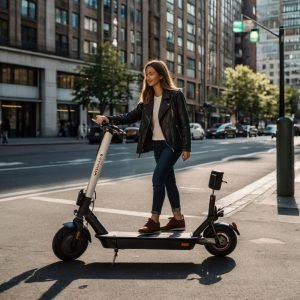
By leveraging real-time traffic information, pedestrian volume metrics, and smart city technologies, cities can streamline traffic flow and alleviate congestion. For instance, sensors on streets in San Francisco have optimized traffic signal timing to reduce congestion at intersections with high pedestrian volumes.
Data analytics plays a vital role in monitoring parking space usage. This allows city officials to identify bottlenecks and adjust traffic signal timing more effectively. In Chicago, this has resulted in a 20% decrease in average commute times by ensuring that drivers can find vacant spots quickly when needed.
Similarly, smart cities use pedestrian volume metrics to fine-tune their infrastructure and services better. For example, cities like Copenhagen have implemented real-time bus priority systems based on passenger demand to reduce congestion during peak hours.
By harnessing the power of data analytics, smart city technologies enable more efficient resource allocation. They can help plan road maintenance and traffic signal timing accordingly, reducing congestion by optimizing travel times for residents and visitors alike.
Innovative transportation solutions like bike-share programs have become popular in cities across the globe. For instance, Barcelona’s bike-sharing system has significantly reduced parking woes during peak hours when public transportation is congested with tourists.
Smart Transportation Revolution: A City-Wide Success Story
Never underestimate the transformative power that comes from collaborative governance. When city planners, transportation officials, and scooter manufacturers work together towards a common goal providing safe and efficient mobility for all residents, magic happens.
When local authorities establish clear regulations around electric scooter sharing systems, the benefits are undeniable. This not only promotes responsible usage but also encourages innovation in design and technology. By establishing guidelines for bike lanes, pedestrian zones, and emergency protocols, cities can foster a culture of mutual respect between road users.
The future of urban transportation is paved with collaborative governance. With smart traffic management solutions integrated into scooter-sharing systems, residents will enjoy reduced congestion and increased air quality. As such, the city stands to reap significant economic benefits while prioritizing public health.
Invest in your city’s mobility infrastructure today by encouraging open communication among key stakeholders together, a smarter transportation system is just around the corner.
